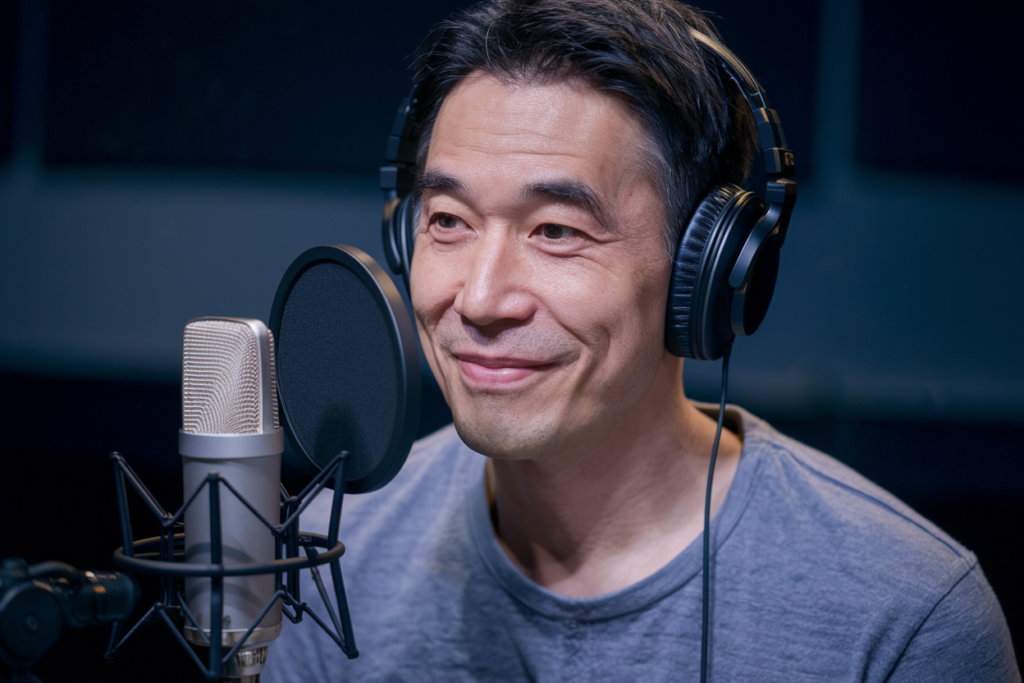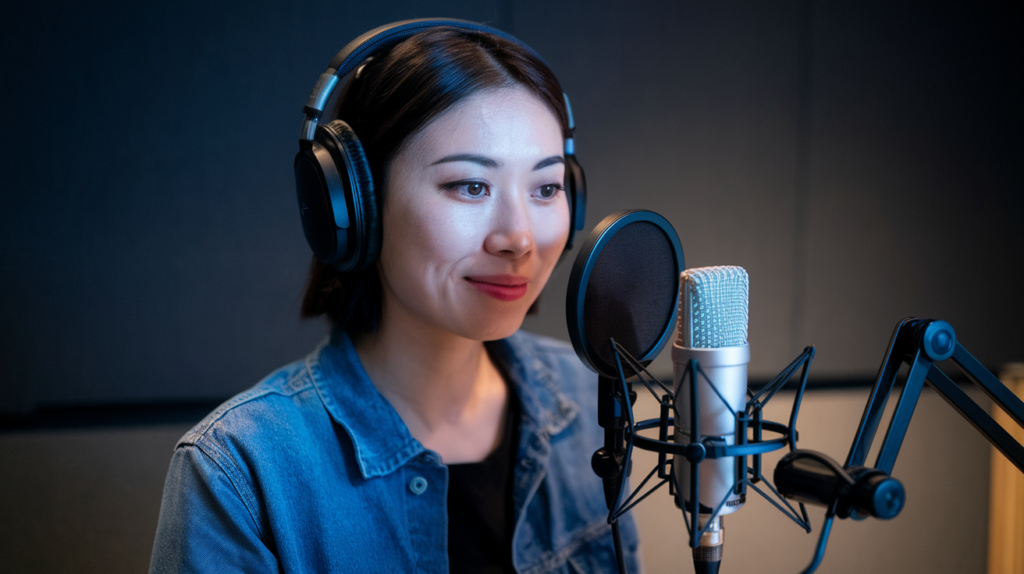Key Takeaways
- Standard Japanese Overview: Standard Japanese, or „Hyojungo,” is based on the Tokyo dialect and serves as the national language, facilitating clear communication across Japan.
- Regional Dialect Diversity: Various regional dialects in Japan showcase unique vocabulary, pronunciation, and grammar influenced by local customs and historical developments.
- Phonetic Variations: Pronunciation and intonation differ significantly between Standard Japanese and regional dialects, impacting how speakers express themselves.
- Vocabulary Differences: Regional dialects often feature unique terms and slang not found in Standard Japanese, enriching conversations with cultural significance.
- Grammatical Distinctions: Sentence structure and particle usage vary among dialects, reflecting relaxed conversational styles that differ from the formal standards of written Japanese.
- Cultural Significance of Dialects: Dialects hold deep cultural importance in Japan, enhancing literature and media while fostering community identity through shared language experiences.
Ever wondered why a conversation in Tokyo sounds so different from one in Osaka? Understanding how Standard Japanese differs from regional dialects can unlock the rich tapestry of this language and deepen your appreciation for Japanese culture.
Overview of Standard Japanese
Standard Japanese, known as „Hyojungo,” serves as the national language and is primarily based on the Tokyo dialect. This form of Japanese has a standardized grammar and vocabulary, making it widely understood across Japan. It plays a crucial role in education, media, and formal communications.
Understanding Standard Japanese can enhance your connection with the culture. You’ll notice that it provides clarity in conversations, especially in professional settings or when interacting with people from different regions. While regional dialects add unique flavor to conversations, Standard Japanese maintains a level of consistency that facilitates effective communication.
In daily life, you’ll encounter Standard Japanese in various contexts like television broadcasts, public announcements, and academic institutions. It’s essential for anyone looking to engage deeply with the language or pursue voiceover work. Mastering this standard form creates opportunities for you to connect with diverse audiences while appreciating the richness of regional variations.
Engaging with both Standard Japanese and regional dialects gives you insight into local customs and nuances. When you’re aware of these differences, your appreciation for the language broadens significantly.
Introduction to Regional Dialects
Regional dialects in Japan showcase the rich linguistic diversity found across the country. Each region has its unique characteristics, influencing vocabulary, pronunciation, and even grammar.
Historical Background
Japan’s regional dialects stem from centuries of geographical isolation and cultural evolution. Different areas developed distinct languages influenced by local customs and historical events. For instance, the Edo period (1603–1868) saw urban centers like Tokyo flourish while rural areas maintained their traditions. As a result, regional variations emerged, leading to unique expressions and phrases that reflect local identity.
Major Dialects in Japan
Several major dialects exist in Japan, each with its own distinct features:
- Kanto Dialect: Centered around Tokyo, this dialect serves as the basis for Standard Japanese. It’s characterized by clear pronunciation and straightforward vocabulary.
- Kansai Dialect: Spoken in cities like Osaka and Kyoto, Kansai is known for its lively intonation and different vocabulary choices. Expressions here often carry a more casual tone.
- Hokkaido Dialect: This northern dialect incorporates influences from Ainu language elements due to historical interactions with indigenous peoples.
- Kyushu Dialect: Found in southern Japan, Kyushu dialect features unique phonetics that can be challenging for non-native speakers to understand fully.
Understanding these regional differences enhances your appreciation of Japanese culture and communication styles. Engaging with various dialects enriches conversations while providing deeper insights into local customs and traditions.
Phonetic Differences
Phonetic differences between Standard Japanese and regional dialects significantly impact communication. Variations in pronunciation create distinct sounds that characterize each dialect, shaping how speakers express themselves.
Pronunciation Variations
Pronunciation varies widely among Japan’s regions. For example, the Tokyo dialect pronounces „sh” sounds sharply, whereas the Kansai dialect often softens these consonants. In Hokkaido, you might notice an influence from the Ainu language, leading to unique vowel pronunciations. These subtle shifts can alter meanings and create a rich tapestry of spoken Japanese that reflects local identities.
Accent and Intonation
Accent and intonation add another layer of complexity to phonetics in Japanese. Standard Japanese employs a more even tone throughout sentences, while regional dialects introduce varied pitch patterns. Kansai speakers often use a rising intonation at sentence ends for emphasis or humor, contributing to their vibrant conversation style. Understanding these nuances helps you navigate conversations more effectively and appreciate the cultural significance behind each way of speaking.
By grasping both pronunciation variations and accent differences, you enhance your ability to communicate with native speakers across Japan’s diverse landscape.
Vocabulary Differences
Vocabulary differences between Standard Japanese and regional dialects highlight the rich linguistic diversity across Japan. These variances showcase unique expressions, terms, and colloquialisms that reflect local culture and customs.
Unique Terms in Regional Dialects
Regional dialects often include specific vocabulary not found in Standard Japanese. For example, in Osaka, „akan” means „no good,” while the standard equivalent is „dame.” Similarly, some terms may carry additional meanings based on context. Understanding these unique terms enhances communication with local speakers and gives insight into cultural nuances.
Borrowed Words and Slang
Borrowed words also play a significant role in regional dialects. Kansai speakers frequently use English-derived slang like „bikkuri” (surprise) to convey emotions more vividly. In contrast, Tokyo residents might prefer the standard term “odoroki.” Recognizing these slang variations allows for richer conversations and deeper connections within different regions of Japan.
Grammatical Variations
Grammatical variations between Standard Japanese and regional dialects reveal unique linguistic features. These differences affect sentence structure and particle usage, influencing communication styles across Japan.
Sentence Structure Changes
Dialectal influences on sentence structure create distinct patterns in regional Japanese. For example, Kansai dialect often employs a more casual and flexible word order compared to Standard Japanese, which follows a Subject-Object-Verb (SOV) format. In Kansai conversations, you might hear subjects omitted for brevity or emphasis, leading to sentences that feel more relaxed and conversational. Additionally, some regions favor the use of colloquial expressions or contractions that aren’t commonly found in formal settings, enhancing the informal tone during discussions.
Particle Usage Differences
Particle usage varies significantly between Standard Japanese and its regional counterparts. Standard Japanese utilizes particles like „wa,” „ga,” and „no” consistently to indicate topics, subjects, and possession. In contrast, certain dialects may employ alternative particles or drop them altogether for ease of communication. For instance, speakers from Osaka sometimes replace „wa” with „ya,” giving their speech a distinctive flair while still conveying the same meaning. Understanding these particle distinctions not only enriches your grasp of nuances within dialects but also enhances interactions with native speakers who embrace their local language traditions.
Cultural Significance of Dialects
Dialects in Japan carry deep cultural significance, reflecting local identities and heritage. They enrich the language by offering a variety of expressions, humor, and emotional resonance unique to each region.
Dialects in Literature and Media
Regional dialects frequently appear in literature and media, providing authenticity to characters and stories. Authors often use dialect to convey a character’s background or personality. For instance, novels set in Osaka may include Kansai dialect phrases that resonate with local readers while giving others insight into the culture. Similarly, television shows often feature voice actors using regional accents to connect with audiences emotionally. This not only enhances storytelling but also preserves linguistic diversity within the narrative fabric of Japanese society.
The Role of Dialects in Identity
Dialects serve as an essential part of personal identity for many speakers. They foster community bonds through shared language experiences and cultural references. When you hear someone speaking their regional dialect, it can evoke feelings of nostalgia or belonging. This connection highlights how language shapes social dynamics; embracing one’s dialect can affirm pride in local heritage while distinguishing groups within broader society. Understanding these nuances fosters appreciation for diverse voices across Japan, emphasizing the importance of regional expression in national culture.
Conclusion
Exploring the differences between Standard Japanese and regional dialects reveals a rich tapestry of language and culture. Each dialect carries its own history and identity reflecting the unique characteristics of its area. By engaging with both Standard Japanese and these regional variations, you gain deeper insights into local customs.
This understanding not only enhances your communication skills but also enriches your experience in Japan. Embracing these linguistic nuances allows you to connect more meaningfully with native speakers while appreciating the diverse expressions that shape this beautiful language. As you navigate through conversations you’ll find that each dialect offers a window into the heart of its community, making your journey through Japan even more rewarding.
Frequently Asked Questions
What is Standard Japanese?
Standard Japanese, known as „Hyojungo,” is the national language of Japan primarily based on the Tokyo dialect. It serves as a common form of communication in education, media, and formal settings, ensuring clarity and consistency across various contexts.
How do regional dialects differ from Standard Japanese?
Regional dialects in Japan showcase unique vocabulary, pronunciation, and grammar that differ from Standard Japanese. For instance, Kansai dialect has distinct intonations and expressions that reflect local culture, while Hokkaido’s dialect includes influences from the Ainu language.
Why are regional dialects important?
Regional dialects enrich the Japanese language by adding flavor and reflecting local identities. Understanding these dialects enhances appreciation for cultural nuances and fosters deeper connections with native speakers across different regions.
How does pronunciation vary between Tokyo and Osaka?
In Tokyo’s standard pronunciation, „sh” sounds are sharp. In contrast, Kansai speakers often soften these consonants. Additionally, accent patterns differ; for example, Kansai speakers use rising intonation to add emphasis or humor.
What role does vocabulary play in understanding regional differences?
Vocabulary variations highlight unique expressions tied to local customs. For example, „akan” in Osaka means „no good,” while its standard equivalent is „dame.” Recognizing these terms can enhance conversations with locals.
Are there grammatical differences between Standard Japanese and regional dialects?
Yes! Regional dialects may have flexible word order or drop certain particles. For example, Osaka speakers might substitute „wa” with „ya,” creating a more casual conversational tone compared to Standard Japanese structure.
How do regional dialects affect cultural identity in Japan?
Dialectal expressions contribute significantly to personal identity and community bonds in Japan. They appear frequently in literature and media, fostering emotional connections among audiences while reflecting local heritage pride.







